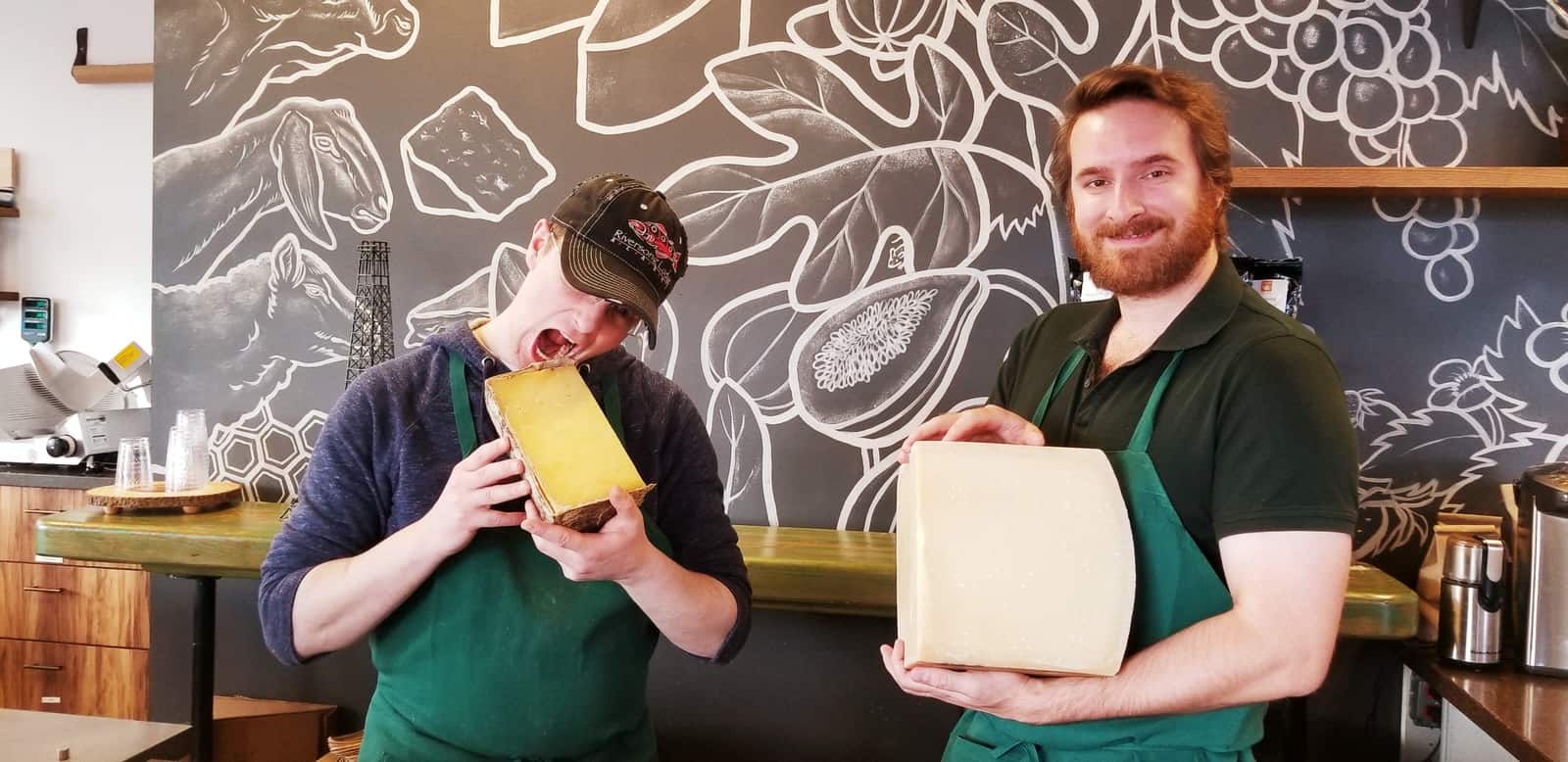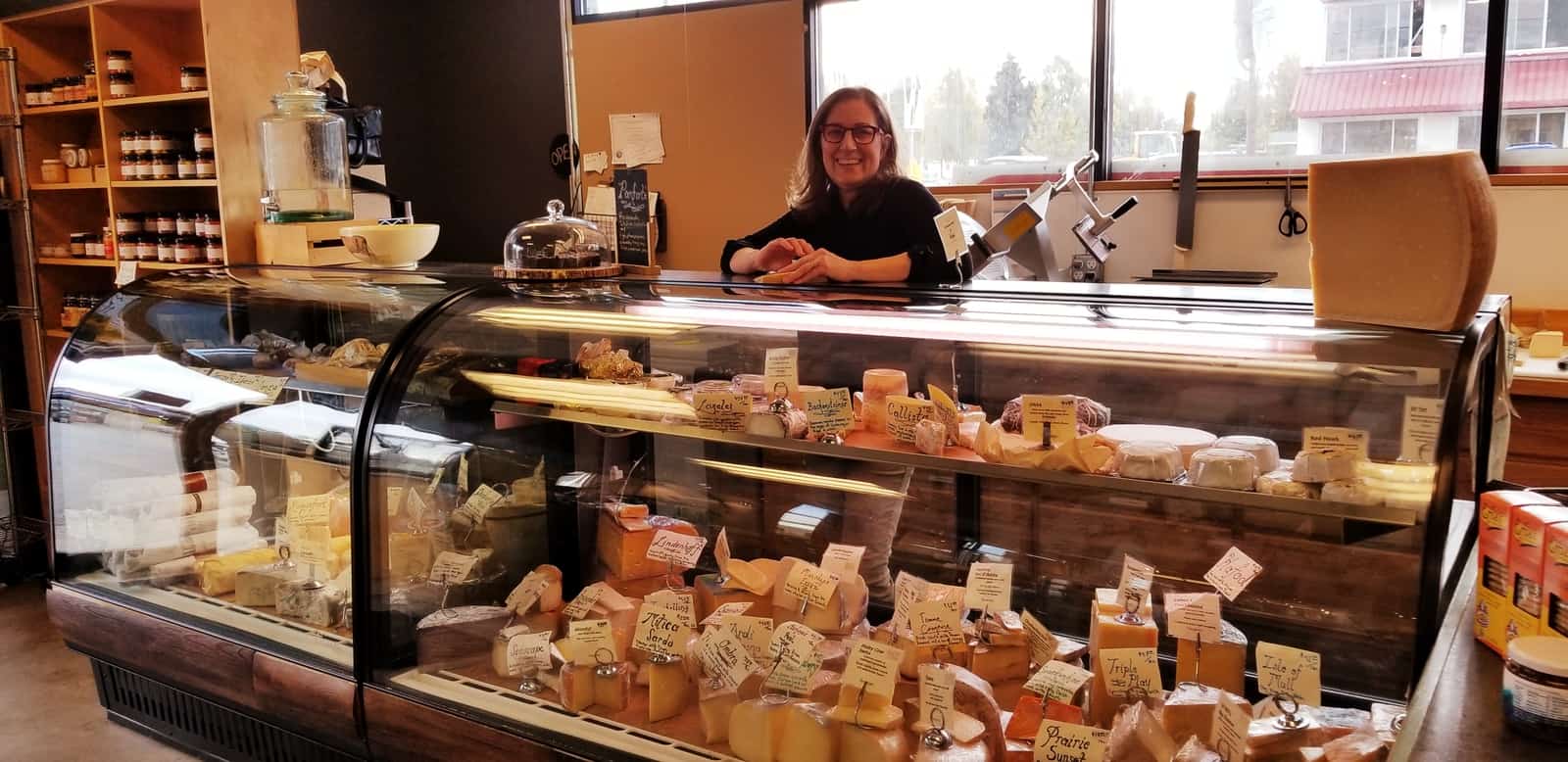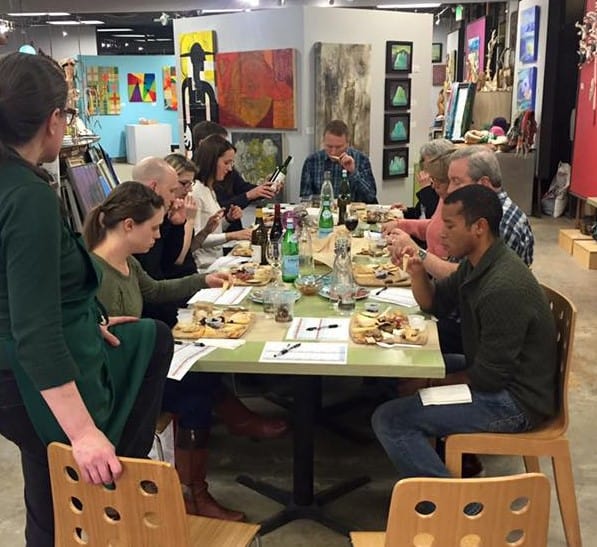
Helen Howarth, a lifelong resident of Anchorage, Alaska, remembers the cheese of her childhood as being just one color: orange. “Velveeta was where it was at,” she recalls, “and if you got a chunk of real cheddar from the store, that was the most amazing thing.” A travel-heavy job in arts administration helped Howarth expand her tastes and her horizons; in 2010, seeking a career change, she decided to open Fromagio’s Artisan Cheese, Anchorage’s—and perhaps Alaska’s—very first artisanal cheese store.
Located in the city’s Midtown area, Fromagio’s is filled with—for lack of a better word—culture: In addition to carrying dozens of cheeses from around the globe, the shop shares space with a local art gallery. Customers can walk back and forth between the two storefronts, admiring paintings while savoring samples.
But don’t mistake Fromagio’s for an exclusive, members-only joint. Howarth keeps the frontier spirit of America’s 49th state alive by making her own crackers. Imported ones are always broken or taste stale, she says—and pairing imported cheeses with locally-harvested ingredients. And when she’s not whipping up unexpected beverages or accompaniments, she’s convincing customers that cheese is meant to be savored; it shouldn’t be stress-inducing. We’ll lift our glasses—and our homemade crackers—to that.
culture: What is the cheese scene like in Alaska?
Helen Howarth: I would say it’s evolving, but it’s in its younger stages. Restaurants don’t really do cheese boards or anything like that—or if they do, they get it at Costco.
We do classes and a variety of educational things. I think on average, we spend about 20 minutes with every person at the counter, just helping them taste their way to cheese Nirvana.
culture: What sets your shop apart?
HH: We don’t sell cheese as much as we sell an experience.
culture: What’s the most interesting cheese you have?
HH: One of my favorite cheeses right now is [Briar Rose Creamery] Lorelei. It’s a goat’s milk cheese washed in beer from Oregon. It’s really good; it’s got that surface-ripened moisture going on.
culture: How do you approach building a cheese plate?
HH: It’s totally customer-driven. We recommend one soft cheese, a couple of firms, and a blue, but maybe you don’t like blue cheese, and maybe you don’t want a soft cheese, and maybe you don’t like stinky cheeses. We make recommendations, but we don’t dictate; we just say try this, try this, try this. And then you end up with funky plates sometimes. What pulls it all together for me is the embellishments.
culture: What kind of pairings are you obsessed with right now?
HH: We make a variety of beverages using shrubs, and other botanical beverages that are brewed using local Alaskan ingredients. I shrub a lot of fruits that are local. The other day, I made a shrub with currants, and then I had another shrub going with rhubarb and blueberries. I called it “bluebarb.”
And here’s an interesting one: kelp salsa, made with bull kelp, which you get out in the ocean.
culture: Bread or crackers?
HH: Crackers. The right bread is critical, so I’m picky about that.
culture: What’s the one accompaniment you can’t live without ever?
HH: Fig almond spread.
culture: What do you tell people who have never been to your shop before?
HH: That it’s a fun date night!
I think people come in and they’re a little bit intimidated, and our goal is to demystify things. When people say “I’ve never been a fancy cheese shop before,” I say, “I’ve never been in one either.”
Let’s just get down to earth and explore these cheeses that have been made by traditional makers out of necessity for maybe hundreds of years because they didn’t have a refrigerator and they had to make cheese to survive. You don’t have to have a big pocketbook, you don’t have to have a sophisticated palate, and you don’t have to know anything about cheese to leave here with something that you truly love. You know what you like; put it in your mouth and taste it. If you don’t like it, then that’s all you need to know.
culture: What’s the cheese question you get most often
HH: I think it typically has to do with mold. “Should I throw it away? Should I scrape it off? Is this edible?”
culture: What do you think the most common misconception about cheese is?
HH: That it’s highfalutin food. It’s food for the common man.






